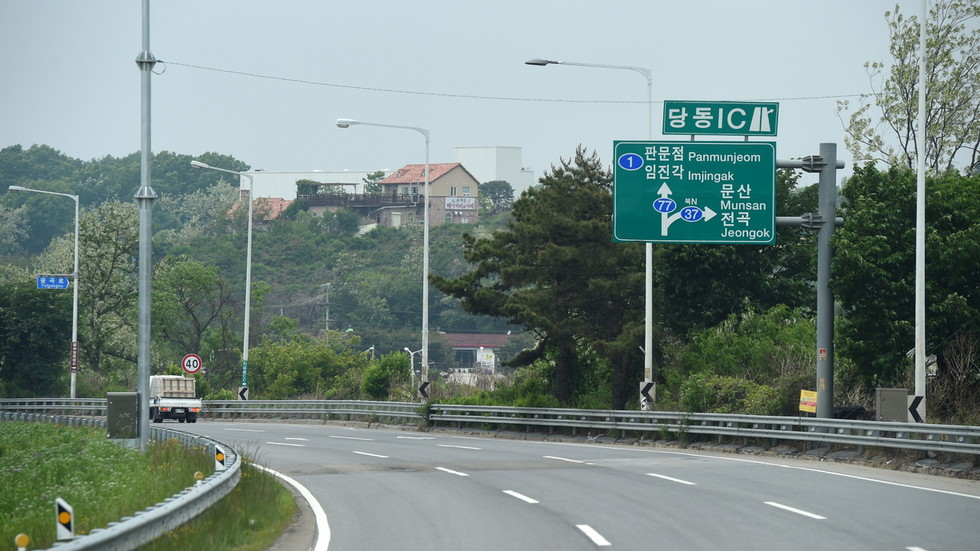In a recent escalation of tensions on the Korean Peninsula, North Korea has announced its intentions to sever all transportation links with South Korea, citing the latter’s joint military exercises with the United States as a catalyst for this decision. The North Korean military, through its general staff and state media outlets, declared on October 9 the commencement of a project aimed at completely isolating the two territories by cutting off roads and railways. This drastic measure mirrors North Korea’s longstanding perception of South Korea as a principal enemy and aims to enhance its defensive posture along the border. The statements from Pyongyang underline the regime’s commitment to bolstering its defenses, with plans to construct robust military structures in response to the perceived aggressions from the South and its American allies.
Pyongyang’s assertion of a need to fortify its defenses stems from what it describes as an acute military situation precipitated by recent US-South Korean drills and the presence of American strategic nuclear assets in the region. In its defense communication, the North Korean government emphasized that these measures are ultimately self-defensive in nature, aimed at preventing war and ensuring the security of the Democratic People’s Republic of Korea (DPRK). This rhetoric underscores North Korea’s persistent narrative of victimization and its justification for expanding military capabilities in the face of external threats. Moreover, the military has signaled to the US forces stationed in South Korea its intent to prevent any potential miscommunication or accidental conflict arising from the fortification activities along the border.
In reaction to North Korea’s declarations, the South Korean government remains vigilant but has indicated a lack of observable construction near the border by its northern counterpart. The South Korean Joint Chiefs of Staff have made it clear that they will not overlook any unilateral actions by North Korea that threaten to change the established status quo along the border. This statement reflects the South’s cautious approach to the evolving security landscape, emphasizing the importance of maintaining stability while preparing for any potential provocations from Pyongyang. As tensions remain high, the South Korean military has reaffirmed its readiness to respond decisively to any acts of aggression, asserting that the burden of any resultant conflict rests squarely on North Korea.
The rhetoric from both sides highlights a precarious balance in the security dynamics of the region. North Korea’s hardline posture appears to be an attempt to consolidate its defense strategies in response to perceived threats from joint military exercises that, from its perspective, threaten national sovereignty. Simultaneously, South Korea’s commitment to preserving its military readiness is indicative of a broader strategy to deter aggression while adhering to a defensive stance. The narrative that each sides’ military preparations are motivated by self-defense illustrates the complexities of the ongoing conflict and the challenges involved in navigating peace and security on the Peninsula.
As the situation develops, the potential for miscalculations and escalations remains a critical concern for both governments and their allies. With North Korea’s declaration to fortify its border defenses, the possibility of an arms build-up can create an environment ripe with misunderstanding and misjudgment. In this sensitive atmosphere, both nations are positioned precariously on the edge of renewed tensions that could spiral into conflict if not managed carefully. The global community watches closely, with diplomatic stakeholders likely to advocate for dialogue and negotiation as a means to defuse hostilities and avert conflict that could have far-reaching consequences beyond the Korean Peninsula.
In summary, the interplay of military readiness, defensive postures, and mutual suspicion is indicative of the ongoing challenges faced in achieving stability on the Korean Peninsula. Both North and South Korea’s reactions to military drills showcase a pattern of escalation driven by historical grievances and contemporary threats. The precarious situation calls for a careful balancing act: maintaining security while striving for diplomatic avenues to enhance communication and mitigate the risk of conflict, thereby ensuring peace in a region marked by longstanding division and hostility. The future course of the Korean Peninsula will likely depend on the ability of both nations, as well as external powers, to navigate these complex dynamics through persistent engagement and a commitment to dialogue.

